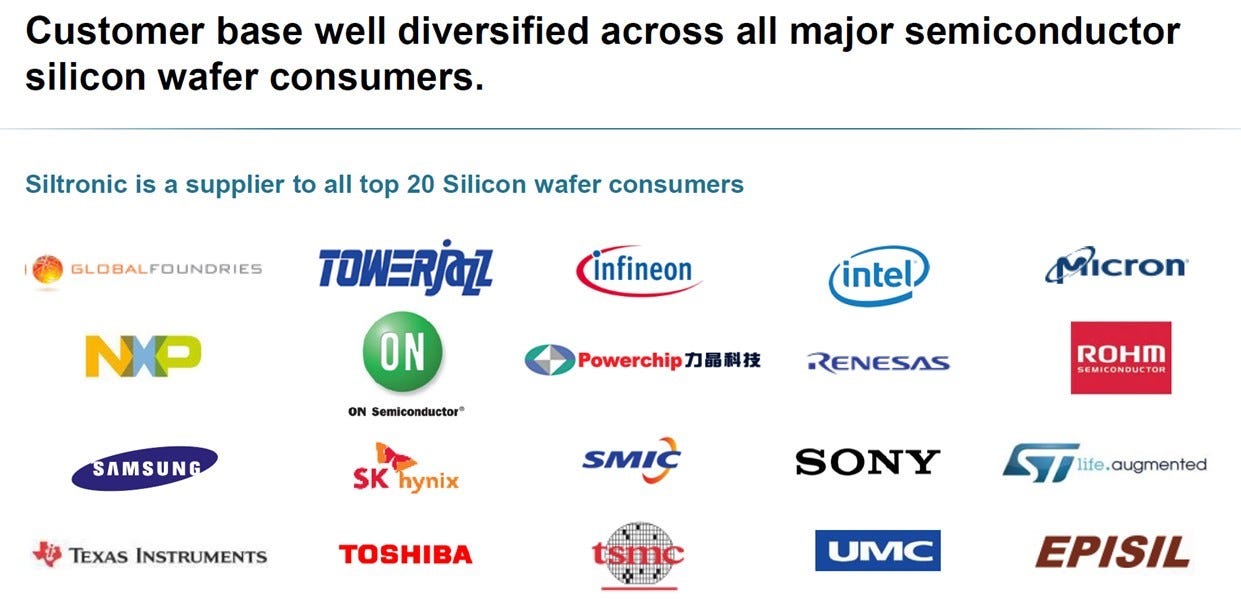Siltronic AG
An alternative way to profit from the boom in semiconductors, at just 7x earnings?
Headquartered in Munich and with four production facilities (2 in Germany - Freiberg and Burghausen -, one in the US – Portland - and one in Singapore), Siltronic AG (WAF GR) is the fourth-largest producer of silicon wafers, supplying all top 20 silicon wafers consumers.
While the company exists in its current form since 2004, its origin…




